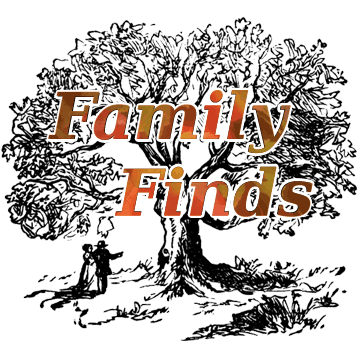
Research Negatives
While researching my so-called brick-wall ancestors, I review many sources that often lead to negative results. These research negatives, or null results, are frustrating but are expected when I do genealogy research. I have many examples of a negative result that proves to be a positive, or at least useful, finding. Additionally, documenting the negatives may help another researcher along their path. Sharing negative research, and highlighting how it does not match a particular ancestor, can aid with correcting family trees that have saved the results as positive sources.
NOT my William Russell
In the 1830 census I found a family that fit the profile for my missing Russell ancestors. [1] The family was living in Strasburg Twp., Lancaster Co., PA, which is where MY William was living in 1850. The head of household was a man named William age 50 to 60. There was also a woman 50-60 and a male age 15-20 and another age 20-30. Either of which could have been MY William. I tracked this family and discovered they were William and Mary Russel and they had a son named William who was born in 1815. But, in the 1850 census, I found William Sr. had died and Mary was head of household with her son, William Jr., listed as “idiotic.” At this point I knew this family was not the one I was seeking. But, I now recognize this family in other records and have been able to discount them quickly and move on to other results.

Week 11, 2021: Fortune
I wrote an entire post for the week 11 prompt last year: Fortune, highlighting a negative research result. [2] I intended to write about some wealthy ancestors. I decided I needed to document some primary sources linking the wealthy family to me. Instead, I discovered the primary sources did not support the connection. This negative result led me to primary and secondary sources that instead linked me to a family whose surname is a homophone for the wealthy family, Bird vs Byrd. Documenting this negative research I hope will help to correct the many family trees that have the erroneous connection.
Conclusion
These are just two examples of negative research results I have encountered, and made use of in a positive manner. This year while researching my brick-wall 4th great-grandparents I have had MANY negative results. I have concluded that the more common the surname, the more negative results to expect. So, I am not always able to turn these negatives into positives, but, at least, most can be used to eliminate particular lines of inquiry.
SOURCES:
- Entry for William Russel, US Federal Census, Year: 1830; Census Place: Strasburg, Lancaster, Pennsylvania; Roll: 153; Page: 448; FHL Film: 0020627; Online: 1830 United States Federal Census [database on-line] at Ancestry.com, page 37 of 50.
- Blog post, Family Finds: Fortune; https://barblafara.com/fortune/
1 Comment
Submit a Comment




Turn the negative into a positive. We should encourage one another. Thanks for sharing !